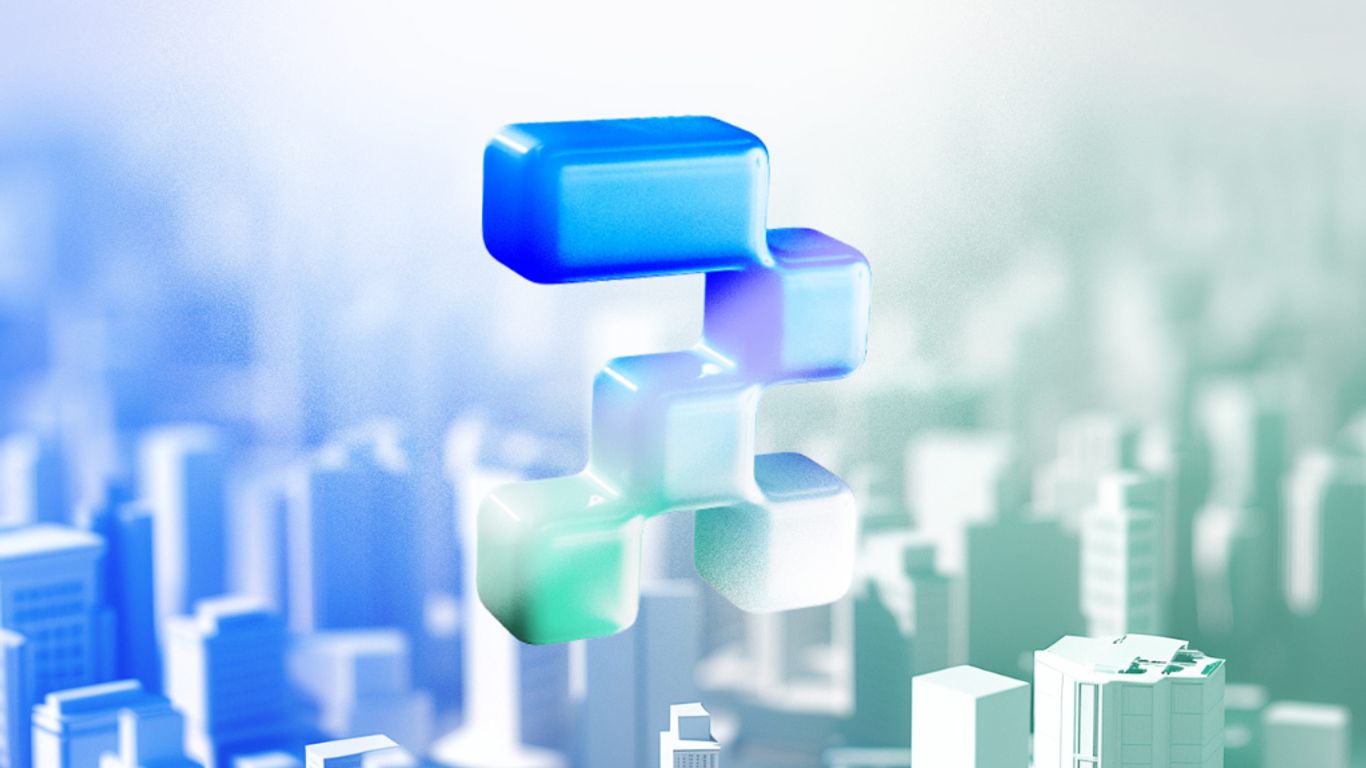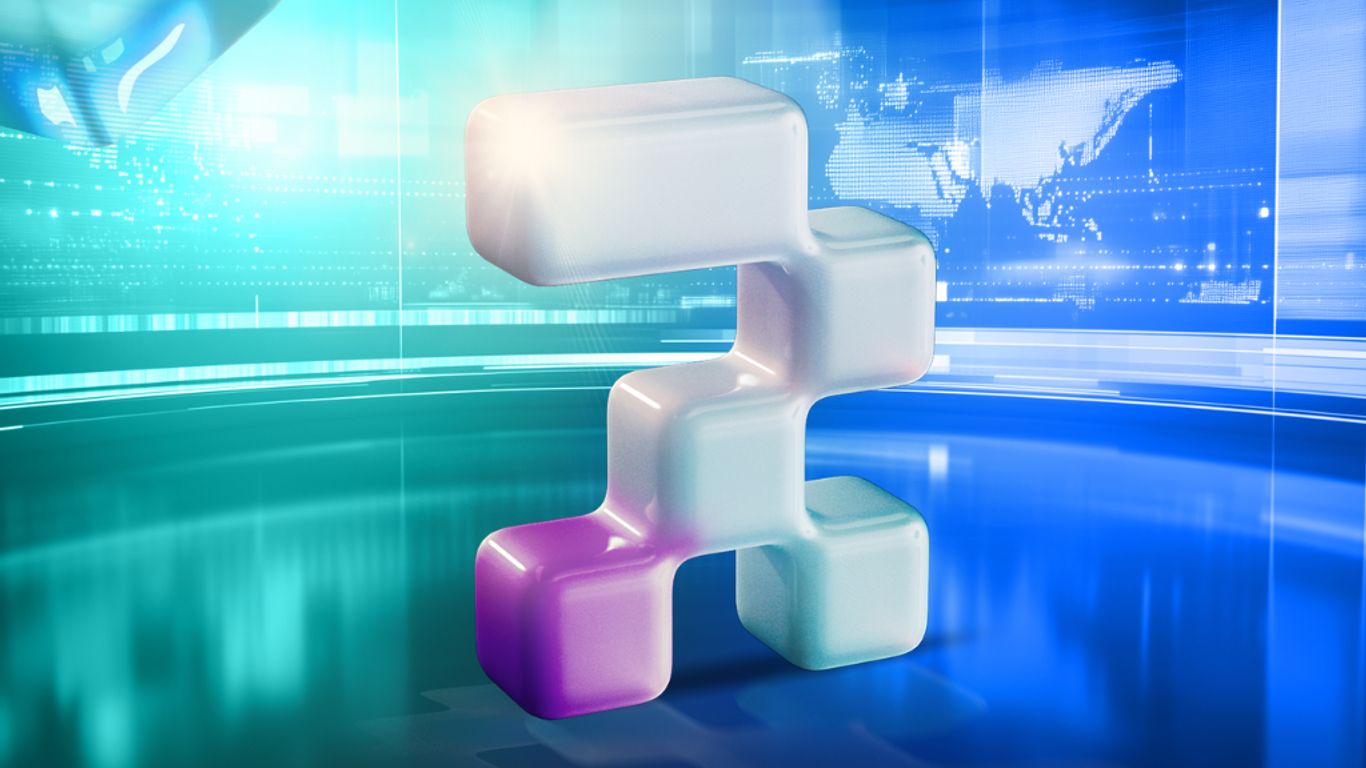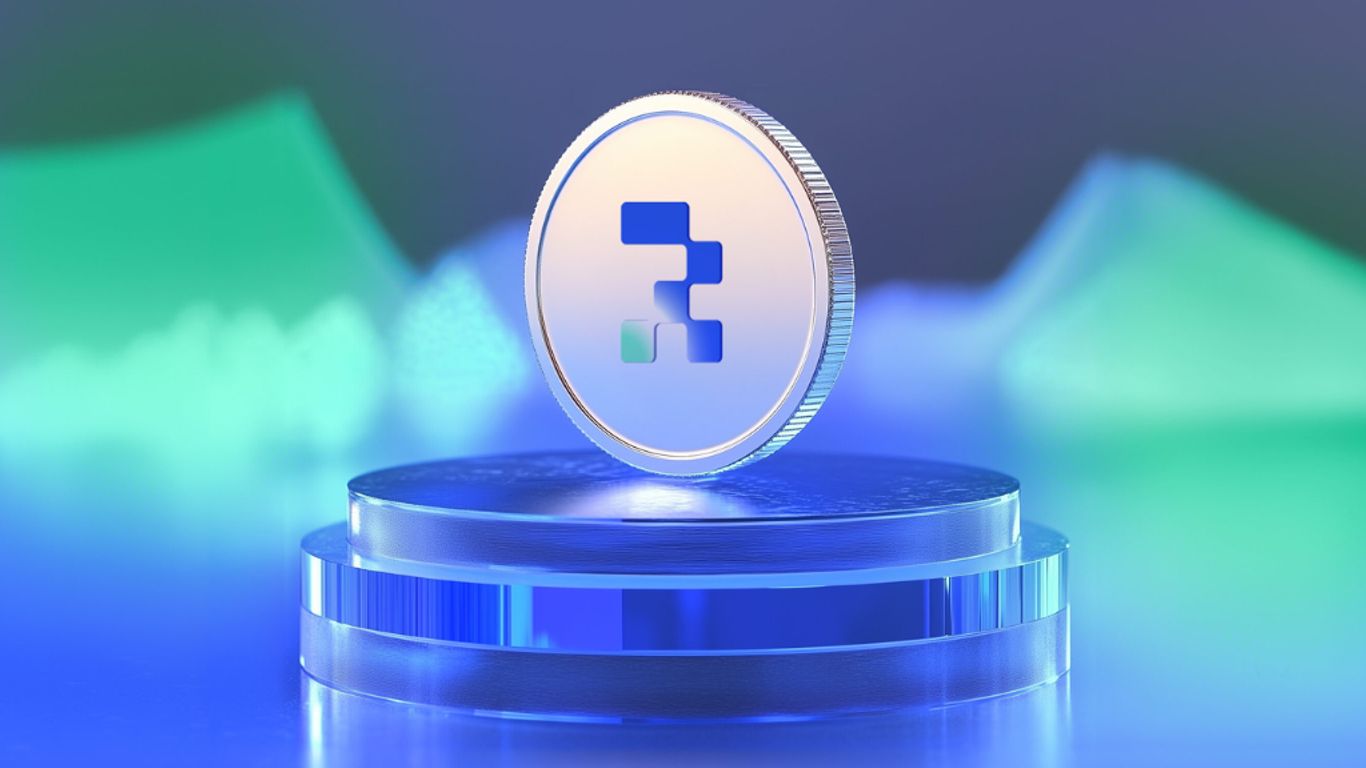Fractional ownership through tokenization is transforming how people invest in real estate and other valuable assets. By breaking down properties into smaller, digital pieces, more individuals can now invest with less money and more flexibility. This approach not only makes investments easier but also opens doors for those who were previously excluded from these markets. Here’s a look at the key takeaways from this innovative investment method.
Key Takeaways
- Fractional ownership lets you buy small parts of a property, making it easier to invest.
- Tokenization increases liquidity, which means it's simpler to buy and sell shares of properties.
- Blockchain technology ensures that transactions are secure and transparent.
- Investors from anywhere can join real estate markets without location barriers.
- Tokenization helps lower costs and speeds up the investment process.
Understanding Fractional Ownership in Tokenized Real Estate
Definition and Concept
Fractional ownership in tokenized real estate means that investors can buy parts or shares of properties. This makes investing less risky and more accessible. Instead of needing to buy an entire property, you can own a fraction of it through digital tokens on a blockchain. This method opens up real estate investment to many more people, allowing small investors to participate.
Historical Context
The idea of fractional ownership isn't new. It has been used in timeshares and shared property arrangements. However, with the rise of blockchain technology, this concept has changed. Blockchain has made fractional ownership easier by reducing paperwork and speeding up the process.
Key Benefits
- Increased Accessibility: More people can invest in real estate without needing a lot of money.
- Lower Costs: Tokenization reduces transaction costs, making it cheaper to invest.
- Greater Liquidity: Investors can buy and sell shares of properties easily, making the market more active.
Tokenized real estate is transforming how people invest, making it easier and more affordable for everyone to join the market.
This new approach to investing is reshaping the real estate landscape, allowing a wider range of investors to participate in the market.
The Role of Blockchain in RWA Tokenization
Tokenization of real-world assets (RWAs) relies heavily on blockchain technology. This technology allows for the creation of digital tokens that represent ownership of physical assets. Here are some key aspects of how blockchain plays a role in RWA tokenization:
Blockchain Technology Overview
- Ethereum: The leading platform for tokenization, known for its smart contracts.
- Hyperledger Besu: A flexible solution for both permissioned and permissionless networks.
- Corda: Focused on enterprise solutions, ensuring compliance with regulations.
Smart Contracts and Security
Smart contracts automate transactions, ensuring that all parties fulfill their obligations. This reduces the risk of fraud and enhances security. Key benefits include:
- Automation: Reduces the need for intermediaries.
- Trust: All transactions are recorded on the blockchain, making them verifiable.
- Efficiency: Speeds up the transaction process.
Transparency and Immutability
Blockchain provides a transparent and unchangeable record of all transactions. This means:
- Investors can easily verify ownership and transaction history.
- The risk of manipulation is significantly reduced.
- Accessibility: Tokenized RWAs can reach a broader audience, making investments more inclusive.
The rise of RWA tokenization is just the beginning. As technology evolves, we can expect even more innovative applications and broader adoption across various asset classes.
Key Benefits of RWA Tokenization
Increased Liquidity
Tokenizing real-world assets can greatly improve liquidity. Traditional assets like real estate and art are often hard to sell quickly. By converting these assets into digital tokens, they become easier to trade. This allows for fractional ownership, meaning investors can buy and sell smaller parts of an asset. For example:
- A property worth $1 million can be divided into 1,000 tokens, each worth $1,000.
- This makes it easier for more people to invest in high-value assets.
Enhanced Accessibility
Tokenization opens the door for more people to invest in valuable assets. It lowers the barriers to entry, allowing individuals with less capital to participate. For instance:
- A $5.6 million Andy Warhol painting was tokenized, allowing shares to be bought for as little as $5,000.
- This means that even small investors can diversify their portfolios and access markets that were once out of reach.
Cost Efficiency
Tokenization can also lead to cost savings. By using blockchain technology, the costs associated with buying, selling, and managing assets can be reduced. This includes:
- Lower transaction fees compared to traditional methods.
- Reduced need for intermediaries, which can save time and money.
The benefits of tokenizing real-world assets are reshaping the investment landscape, making it more inclusive and efficient.
In summary, the key benefits of RWA tokenization include increased liquidity, enhanced accessibility, and cost efficiency, all contributing to a more open and efficient market.
Technological Innovations Driving RWA Tokenization
Blockchain Platforms
Blockchain technology is the backbone of RWA tokenization. Innovations in blockchain are making it faster and more efficient. For example, Ethereum 2.0 is moving from a proof-of-work to a proof-of-stake system, which will speed up transactions and lower energy use. This is important for handling many transactions related to tokenized assets.
Smart Contracts
Smart contracts are like digital agreements that run automatically. They help make transactions safer and cut out middlemen. In 2024, these contracts are getting smarter, allowing for more complex financial products. For instance, platforms like Chainlink are connecting smart contracts to real-world data, making them even more useful.
Interoperability Solutions
Interoperability is about different systems working together. As RWA tokenization grows, it's crucial that various blockchain platforms can communicate. This will help in trading tokenized assets across different networks. Companies are working on solutions to make this easier, which will boost the overall market.
The future of RWA tokenization looks bright as technology continues to evolve, making investments more accessible for everyone.
Summary
In summary, the technological innovations driving RWA tokenization include:
- Blockchain advancements like Ethereum 2.0.
- Smart contracts that automate and secure transactions.
- Interoperability solutions that connect different blockchain platforms.
These innovations are key to making investments in real-world assets easier and more efficient.
Industries Embracing RWA Tokenization
Tokenization is transforming various industries, making it easier to trade and own real-world assets. Here are some key sectors leading the way:
Real Estate
Real estate has always been a major investment area, but it has often been hard to access. Tokenization allows for fractional ownership, meaning you can own a piece of a property without buying the whole thing. This increased liquidity makes it easier to buy and sell real estate assets.
Art and Collectibles
The art world is also experiencing a shift. Tokenization enables fractional ownership of valuable artworks. This means more people can invest in high-value pieces without needing a fortune. It's a game-changer for both collectors and investors.
Private Equity
Private equity is another area where tokenization is making waves. By converting shares into tokens, investors can trade them more easily. This opens up investment opportunities that were previously out of reach for many.
The rise of RWA tokenization is just the beginning. As technology evolves, we can expect even more innovative applications and broader adoption across various asset classes.
In summary, tokenization is reshaping how we think about ownership and investment across multiple industries, making it more accessible for everyone.
Challenges in RWA Tokenization
Tokenizing real-world assets (RWAs) comes with several challenges that need to be addressed for successful implementation. Here are the main hurdles:
Market Accessibility Issues
- Market accessibility is a significant concern. Tokenization involves various asset classes, including those with physical presence in different countries.
- Creating a marketplace that allows smooth token trading, regardless of the user's location, is crucial. However, differing regulations and taxes complicate this process.
- Lack of standardization across different blockchain platforms poses challenges. Without a unified framework, the transfer and trading of tokenized assets become complicated, hindering growth.
Lack of Standardization
- The absence of a common standard across platforms can lead to fragmentation. This makes it difficult for users to trade and manage their assets effectively.
- Standardization is essential for ensuring that tokenized assets can be easily exchanged and understood by all parties involved.
Addressing these challenges is essential for the future of RWA tokenization. We need to work together to create solutions that foster growth and innovation in this exciting field.
Regulatory Hurdles
- Navigating the regulatory landscape is one of the biggest challenges. Different countries have different rules, making it hard to create a universal framework.
- This lack of clear guidelines can leave tokenized assets in a legal gray area, slowing down adoption. Regulatory uncertainty is a major barrier to progress in this area.
Investment Strategies and Opportunities
Fractional Ownership
Fractional ownership is a key strategy in RWA tokenization. It allows investors to buy small parts of high-value assets, making it easier for more people to invest. For example, platforms like RealT let you own a share of rental properties. This means you can earn rental income based on your investment size, creating a steady flow of passive income.
Secondary Markets
Another exciting opportunity is the secondary markets for tokenized assets. Unlike traditional assets, these can be traded on blockchain exchanges. This offers more flexibility and liquidity. For instance, tokens from the St. Regis Aspen Resort can be bought and sold easily, allowing investors to take advantage of price changes.
Diversification
Investing in tokenized assets also helps with diversification. Here are some benefits:
- Access to new asset classes: You can invest in real estate, art, and more without needing a lot of money.
- Lower risk: By spreading your investments across different assets, you reduce the risk of losing money.
- Global participation: Investors from anywhere can join in, breaking down geographical barriers.
Tokenization is changing the investment landscape, making it more accessible and efficient for everyone.
This new approach to investing is not just about owning a piece of something valuable; it's about creating opportunities for everyone to participate in markets that were once out of reach. Fractional ownership through RWA tokenization is truly revolutionizing how we think about investments.
Case Studies of Successful RWA Tokenization Projects
The St. Regis Aspen Resort
One of the most notable examples of RWA tokenization is the St. Regis Aspen Resort. In 2018, Elevated Returns, a real estate investment firm, tokenized the luxury hotel's equity. They issued $18 million worth of security tokens on the Ethereum blockchain. This project allowed investors to buy and sell shares in the property, enhancing liquidity and making high-value real estate investments more accessible.
Andy Warhol Painting by Maecenas
In the art world, Maecenas successfully tokenized an Andy Warhol painting in 2018. This project allowed investors to purchase shares in the $5.6 million artwork, facilitated by blockchain technology. Each token represented ownership in a fraction of the painting, enabling art enthusiasts to invest in high-value pieces without needing a fortune.
Tokenization of Gold by Digix
Digix has made significant strides in the commodities sector by issuing DGX tokens, each backed by one gram of physical gold stored in secure vaults. This approach allows investors to trade gold in a digital format, enhancing liquidity and accessibility. As of 2024, Digix has tokenized over 80,000 ounces of gold, demonstrating how tokenization can streamline transactions in precious metals.
The rise of RWA tokenization is just the beginning. As technology evolves, we can expect even more innovative applications and broader adoption across various asset classes.
Summary of Key Projects
Future of Institutional Adoption of RWAs
Growth Projections
The future of Real-World Asset (RWA) tokenization looks bright. Many experts predict significant growth in this area, with the market expected to expand rapidly. Here are some key projections:
- The global tokenization market could reach $8.6 billion by 2026.
- A compound annual growth rate (CAGR) of 35% is anticipated.
- By 2027, 10% of the world's GDP may be stored on blockchain technology.
Potential Impact on Markets
RWA tokenization is set to change how we view investments. It can lead to:
- Increased liquidity in traditionally illiquid markets.
- Greater accessibility for smaller investors.
- Enhanced transparency in transactions, fostering trust.
Key Players to Watch
Several companies are leading the charge in RWA tokenization. Notable players include:
- Securitize: Focused on regulatory compliance.
- Polymath: Streamlining the tokenization process.
- RealT: Making real estate investments more accessible.
The rise of RWA tokenization is just the beginning. As technology evolves, we can expect even more innovative applications and broader adoption across various asset classes.
Risk Management and Due Diligence in RWA Investments
Regulatory Compliance
Investors in RWA tokenization must be aware of regulatory compliance. Different countries have various rules, which can create confusion. It's essential to check if the tokenization platform follows the laws in your area. This helps avoid legal issues later on.
Technical Vulnerabilities
Another important aspect is to look for technical vulnerabilities. Since RWA tokenization relies on technology, any weaknesses can lead to problems. Investors should ensure that the platform uses strong security measures to protect their assets from cyber threats.
Investor Protections
Lastly, understanding investor protections is crucial. Investors should know what safeguards are in place. This includes knowing how the platform handles disputes and what happens if something goes wrong.
Being cautious and doing your homework can help you make safer investments in RWA tokenization.
Summary of Key Points
- Regulatory Compliance: Check local laws and regulations.
- Technical Vulnerabilities: Ensure strong security measures are in place.
- Investor Protections: Understand the safeguards offered by the platform.
How to Get Started with RWA Tokenization
Choosing the Right Platform
To begin your journey in RWA tokenization, selecting the right platform is crucial. Here are some steps to consider:
- Research various platforms that specialize in tokenization.
- Evaluate their features, fees, and user reviews.
- Check for compliance with local regulations.
Legal Considerations
Understanding the legal landscape is essential. Here are key points to keep in mind:
- Consult with legal experts to ensure compliance with securities laws.
- Prepare necessary documentation for your asset.
- Stay updated on changing regulations in your jurisdiction.
Initial Costs
Starting with RWA tokenization may involve some costs. Consider the following:
- Platform fees for token creation and management.
- Legal fees for compliance and documentation.
- Marketing costs to promote your tokenized asset.
Getting started with RWA tokenization can open doors to new investment opportunities. By following the right steps, you can make your assets more accessible and liquid.
Summary
In summary, to successfully start with RWA tokenization, focus on choosing the right platform, understanding legal requirements, and budgeting for initial costs. This approach will help you navigate the complexities of tokenizing real-world assets effectively.
Conclusion
In conclusion, fractional ownership through RWA tokenization is changing the investment landscape. This innovative approach allows more people to invest in valuable assets that were once out of reach. By breaking down large assets into smaller, affordable pieces, it opens the door for many new investors. As blockchain technology continues to grow, the future looks bright for RWA tokenization. Now is the perfect time to explore these investment opportunities and be part of this exciting change.
Frequently Asked Questions
What is fractional ownership in tokenized real estate?
Fractional ownership lets you buy a small part of a property instead of the whole thing. This way, more people can invest in real estate.
How does tokenization work?
Tokenization turns real assets like buildings or art into digital tokens on a blockchain. These tokens represent ownership and can be easily traded.
What are the benefits of tokenization?
Tokenization makes investing easier and cheaper. It allows more people to invest in valuable assets, increases liquidity, and ensures transparency.
Can anyone invest in tokenized assets?
Yes! Tokenization opens up investment opportunities for everyone, even those who may not have a lot of money.
What industries are using tokenization?
Industries like real estate, art, and private equity are adopting tokenization to make investments more accessible.
What challenges does tokenization face?
Tokenization faces issues like market accessibility, lack of standard rules, and regulations that can vary by location.
How can I start investing in tokenized assets?
You can start by choosing a reliable platform that offers tokenized investments and learning about the legal steps involved.
Are tokenized assets secure?
Tokenized assets are generally secure due to blockchain technology, but they can still face risks like market changes and cyber threats.




